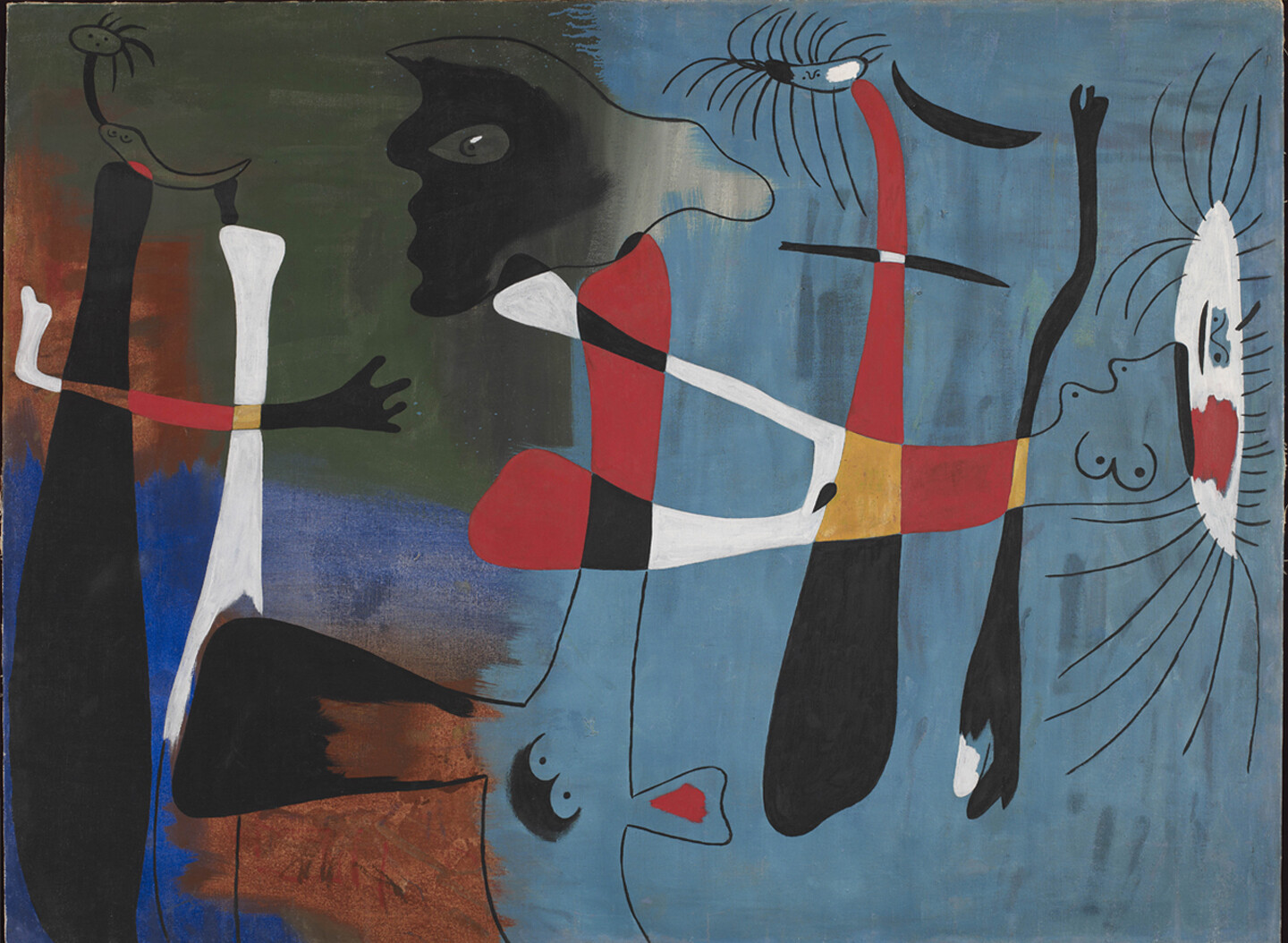Absolute Reality. Paris, 1920–1945
February 10–May 28, 2023
Curator: Enrique Juncosa
The Guggenheim Museum Bilbao presents Joan Miró. Absolute Reality. Paris, 1920–1945, an exhibition that explores the career between the years 1920 and 1945 of one of the most outstanding artists of the 20th century. The start of this fundamental period in Miró’s oeuvre is marked by the date of his first trip to Paris, a key city in his life and work, and it closes with the year when Miró, after producing his Constellations (1940–41) and then hardly painting at all for some years, created a great series of works on white backgrounds that consolidated his language of signs floating on ambiguous grounds.
In the 25 years of activity covered by the exhibition, there is a constant flow of new ideas ranging from his initial magic realism to his language of constellated signs. In this development, it becomes clear that prehistoric art, including rock paintings, petroglyphs, and statuettes, held a special interest for Miró, a fascination confirmed by his notebooks, where he proposes returning to the dawn of art in order to retrieve its original spiritual sense.
The work of Joan Miró (b. 1893 Barcelona; d. 1983, Palma) is admired for its formal innovations developed in the context of the first avant-garde movements, especially Dadaism and Surrealism, and he is also considered a precursor of Abstract Expressionism. Miró was moreover an artist interested in spiritual matters and fascinated by visions and dreams. More recently, attention has also been drawn to the political aspects of his work, emphasizing his firm opposition to Franco’s dictatorship and his sympathy for the Catalan nationalism of the period. Some of his ideas like his proclamation of the “assassination of painting,” made at a point in the late 1920s when Miró was painting unceasingly, remain intriguing, and point to an attitude heralding Conceptual Art. Forty years after his death, in short, his oeuvre still interests and fascinates us while remaining just as enigmatic as ever.
Miró’s oeuvre is an exemplary mythopoetic project, a constant transformation of lived experience into art. As firmly as he ignored traditional realism, Miró also rejected the idea of pure abstraction, asserting that all the marks he painted on his works corresponded to something concrete and anchored in a profound reality that is part of reality itself. This idea relates to a phrase by poet André Breton, the leader of the Surrealist movement, who spoke of a new absolute reality in which the inner world of artists and poets was incorporated to the outside world. In the meantime, Paul Klee, an artist admired by Miró, called his own work abstract but with memories, meaning that in art, the real is the real transformed by memory. In statements made to Cahiers d’Art in 1939, Miró affirmed: “If we don’t try to discover the religious essence or the magical sense of things, we shall do no more than add new causes of degradation to those already surrounding people today.”

